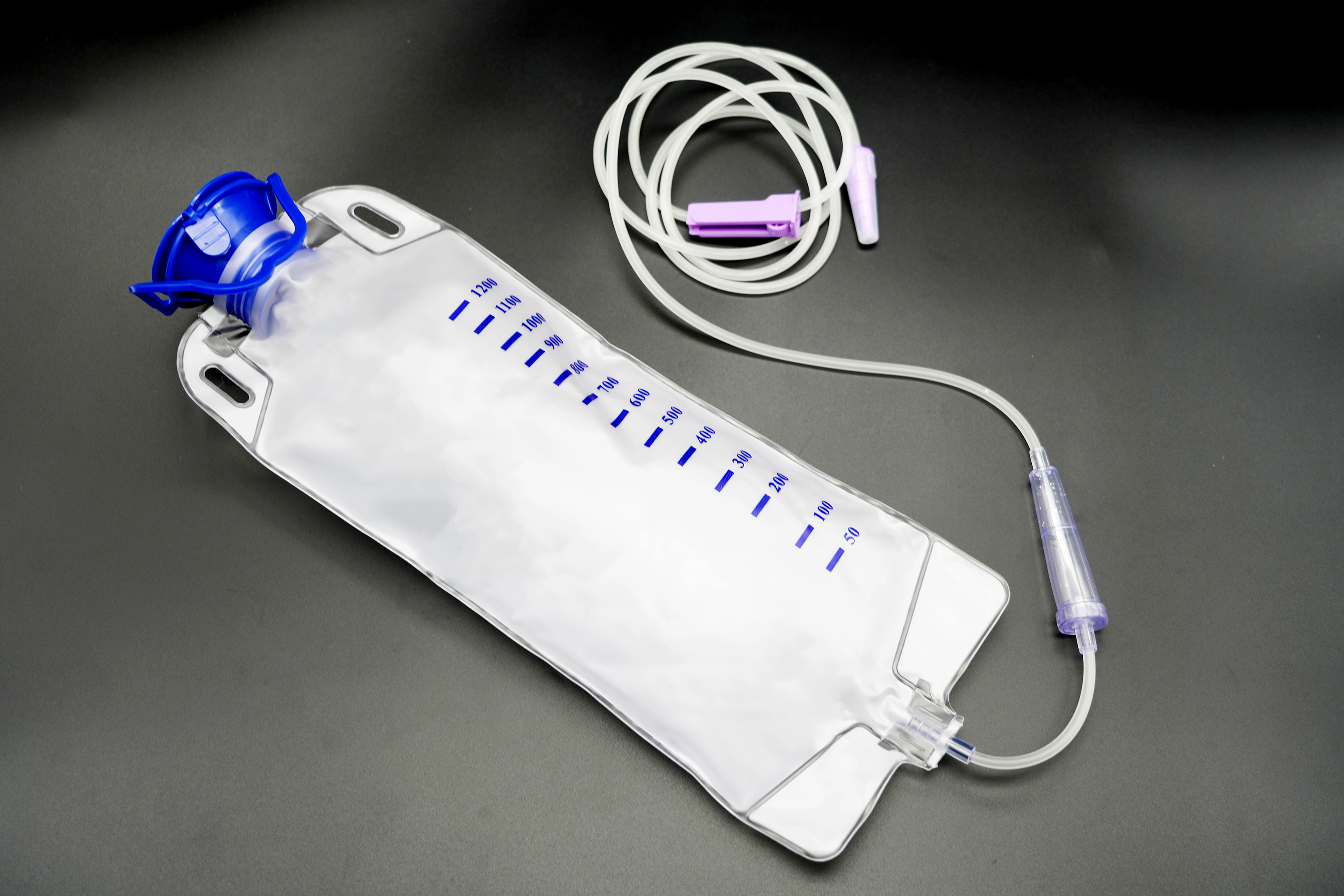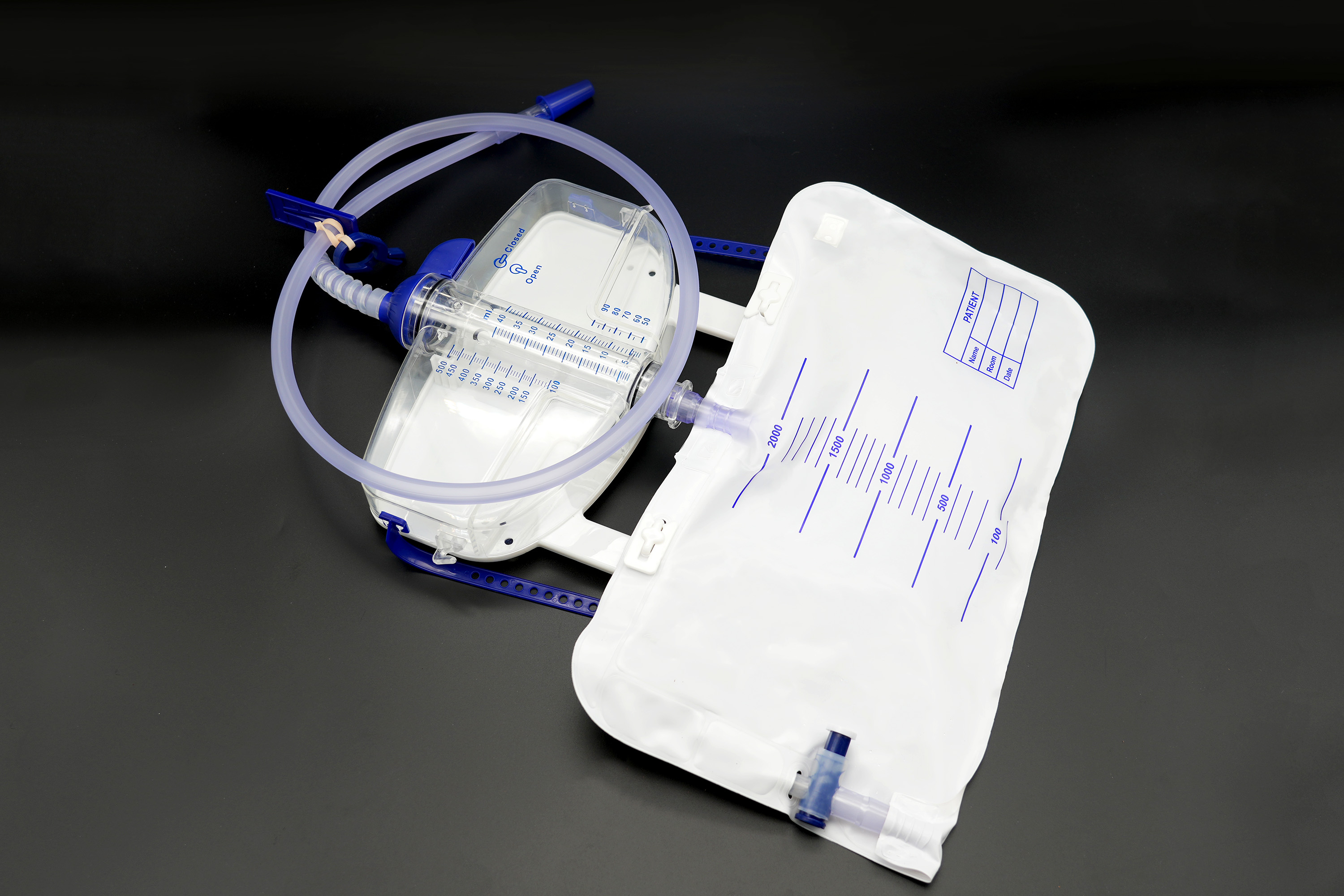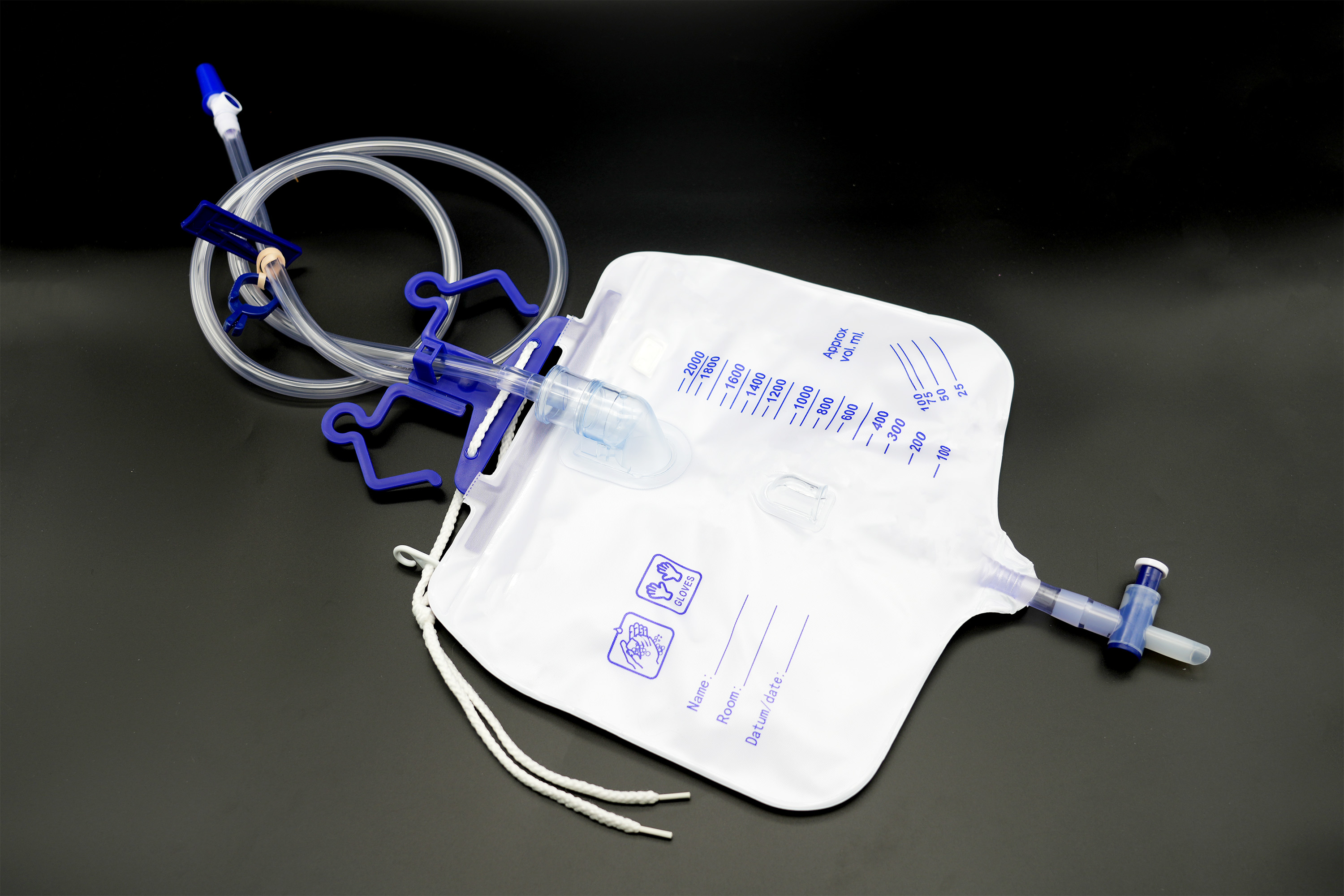
You Are Here:Home > News Center
> Industry dynamics
News navigation
Recommended news
- What are the main functional aspects of gastrointestinal nutrition bags
- What are the advantages of precision urine bags
- Where is the convenience of gastrointestinal nutrition bags reflected
- What are the applications of precision urinary bags in surgery
- What are the characteristics of medical leg bags
Recommended products
What are the main functional aspects of gastrointestinal nutrition bags
source:www.leavin.cn | Release time:2025-11-05
The functionality of gastrointestinal nutrition bags is mainly reflected in three core dimensions: correct delivery of nutrients, adaptation to gastrointestinal functional status, and ensuring safe use. They can provide customized nutritional support for people who cannot eat orally (such as postoperative, severe, and weak digestive function). The specific functions are broken down as follows:
1、 Nutritional supply function: correctly adapt to gastrointestinal absorption capacity
The core of gastrointestinal nutrition bags is to match the digestive and absorption capacity of different populations through "nutritional formula+delivery method" to ensure effective nutrient intake.
1. Customized formula
Corresponding nutritional formulas can be selected based on the user's gastrointestinal function status, such as:
For patients with weak digestive function (such as the elderly and those in the recovery period after surgery): provide "short peptide" or "amino acid" nutrition bags, with nutrients pre processed into small molecules that can be directly absorbed without excessive digestion by the gastrointestinal tract, reducing the burden on the gastrointestinal tract.
For those who require high-energy supplementation (such as critically ill patients and cancer patients): Provide a "high-energy high protein" nutrition bag, with an energy of 125-150kcal per 100ml and a protein content of ≥ 5g, to meet high metabolic needs.
For people with special diseases: special type for diabetes (low sugar, high dietary fiber), special type for kidney disease (low protein, low phosphorus and potassium), etc., so as to avoid aggravating the disease with nutrition.
2. Balanced nutrition
A standard gastrointestinal nutrition bag usually contains five major categories of nutrients: protein (whey protein, soy protein, etc.), carbohydrates (maltodextrin, glucose syrup), fats (vegetable oil, medium chain triglycerides), vitamins (vitamin A, B group, C, etc.), and minerals (calcium, iron, zinc, etc.), with proportions that meet the daily needs of the human body, and can meet basic nutrition without the need for additional food combinations.
2、 Gastrointestinal adaptation function: protects the gastrointestinal mucosa and maintains intestinal function
Different from intravenous nutrition, gastrointestinal nutrition bags deliver nutrients by simulating normal eating, which can protect the structure and function of the gastrointestinal tract and avoid intestinal atrophy caused by long-term fasting.
1. Gently promote intestinal peristalsis
The dietary fiber (such as oligofructose, inulin) or liquid nutrients in the nutrition bag can gently protect the intestinal mucosa, promote intestinal peristalsis, prevent constipation and intestinal paralysis caused by long-term bed rest or fasting, and maintain normal physiological rhythm of the intestine.
2.Protect intestinal barrier function
Continuous enteral nutrition supply can provide energy for intestinal epithelial cells (mainly from glutamine), promote epithelial cell repair and regeneration, reduce intestinal mucosal atrophy, and lower the risk of intestinal bacterial translocation (especially for critically ill patients, it can reduce infection complications).
2. Adapt to different conveying scenarios
It can be delivered through different methods such as "nasogastric feeding tube", "gastrostomy tube", "jejunostomy tube", etc., to adapt to different functional states of the gastrointestinal tract:
Individuals with normal gastric function: Directly delivered into the stomach through a nasogastric tube, utilizing the digestive function of the stomach to initially break down nutrients.
For those with insufficient gastric motility or prone to reflux: Transport through a jejunostomy tube to the jejunum, bypass the stomach, and directly enter the small intestine for absorption, avoiding vomiting and reflux.
3、 Using safety and convenience features: reducing operational risks and enhancing user experience
Gastrointestinal nutrition bags are designed with full consideration for clinical or household use scenarios, ensuring safety and convenience through detailed optimization.
1. Aseptic and anti contamination design
Using a "three-layer co extruded film" packaging, the entire process is sterile at the factory. After opening, it can be directly connected to the conveying pipeline to avoid air or external bacterial contamination.
Some nutrition bags are equipped with an "anti reflux valve" to prevent the nutrient solution from flowing back into the bag and causing contamination, while also avoiding pipeline blockage (such as nasal feeding tube blockage).
2. Controllable conveying speed
When used in conjunction with a "nutrition pump", the infusion rate can be correctly controlled (such as 20-100ml/h) to avoid a large amount of nutrient solution entering the gastrointestinal tract in a short period of time, causing bloating and diarrhea (especially for those who are sensitive to the gastrointestinal tract, slow infusion can improve tolerance).
A simple nutrition bag for home use, which can be manually controlled for speed through a "drip speed regulator". It is easy to operate and does not require professional equipment.
3. Convenient usage details
The bag body is labeled with a "capacity scale" (such as 200ml, 500ml) to facilitate recording of daily intake and avoid excessive or insufficient nutrition.
Some nutrition bags can be directly refrigerated (2-8 ℃) and can be used within 24 hours after opening, making them suitable for long-term home storage; And the bag is soft and easy to carry (such as when the patient goes out).
1、 Nutritional supply function: correctly adapt to gastrointestinal absorption capacity
The core of gastrointestinal nutrition bags is to match the digestive and absorption capacity of different populations through "nutritional formula+delivery method" to ensure effective nutrient intake.
1. Customized formula
Corresponding nutritional formulas can be selected based on the user's gastrointestinal function status, such as:
For patients with weak digestive function (such as the elderly and those in the recovery period after surgery): provide "short peptide" or "amino acid" nutrition bags, with nutrients pre processed into small molecules that can be directly absorbed without excessive digestion by the gastrointestinal tract, reducing the burden on the gastrointestinal tract.
For those who require high-energy supplementation (such as critically ill patients and cancer patients): Provide a "high-energy high protein" nutrition bag, with an energy of 125-150kcal per 100ml and a protein content of ≥ 5g, to meet high metabolic needs.
For people with special diseases: special type for diabetes (low sugar, high dietary fiber), special type for kidney disease (low protein, low phosphorus and potassium), etc., so as to avoid aggravating the disease with nutrition.
2. Balanced nutrition
A standard gastrointestinal nutrition bag usually contains five major categories of nutrients: protein (whey protein, soy protein, etc.), carbohydrates (maltodextrin, glucose syrup), fats (vegetable oil, medium chain triglycerides), vitamins (vitamin A, B group, C, etc.), and minerals (calcium, iron, zinc, etc.), with proportions that meet the daily needs of the human body, and can meet basic nutrition without the need for additional food combinations.
2、 Gastrointestinal adaptation function: protects the gastrointestinal mucosa and maintains intestinal function
Different from intravenous nutrition, gastrointestinal nutrition bags deliver nutrients by simulating normal eating, which can protect the structure and function of the gastrointestinal tract and avoid intestinal atrophy caused by long-term fasting.
1. Gently promote intestinal peristalsis
The dietary fiber (such as oligofructose, inulin) or liquid nutrients in the nutrition bag can gently protect the intestinal mucosa, promote intestinal peristalsis, prevent constipation and intestinal paralysis caused by long-term bed rest or fasting, and maintain normal physiological rhythm of the intestine.
2.Protect intestinal barrier function
Continuous enteral nutrition supply can provide energy for intestinal epithelial cells (mainly from glutamine), promote epithelial cell repair and regeneration, reduce intestinal mucosal atrophy, and lower the risk of intestinal bacterial translocation (especially for critically ill patients, it can reduce infection complications).
2. Adapt to different conveying scenarios
It can be delivered through different methods such as "nasogastric feeding tube", "gastrostomy tube", "jejunostomy tube", etc., to adapt to different functional states of the gastrointestinal tract:
Individuals with normal gastric function: Directly delivered into the stomach through a nasogastric tube, utilizing the digestive function of the stomach to initially break down nutrients.
For those with insufficient gastric motility or prone to reflux: Transport through a jejunostomy tube to the jejunum, bypass the stomach, and directly enter the small intestine for absorption, avoiding vomiting and reflux.
3、 Using safety and convenience features: reducing operational risks and enhancing user experience
Gastrointestinal nutrition bags are designed with full consideration for clinical or household use scenarios, ensuring safety and convenience through detailed optimization.
1. Aseptic and anti contamination design
Using a "three-layer co extruded film" packaging, the entire process is sterile at the factory. After opening, it can be directly connected to the conveying pipeline to avoid air or external bacterial contamination.
Some nutrition bags are equipped with an "anti reflux valve" to prevent the nutrient solution from flowing back into the bag and causing contamination, while also avoiding pipeline blockage (such as nasal feeding tube blockage).
2. Controllable conveying speed
When used in conjunction with a "nutrition pump", the infusion rate can be correctly controlled (such as 20-100ml/h) to avoid a large amount of nutrient solution entering the gastrointestinal tract in a short period of time, causing bloating and diarrhea (especially for those who are sensitive to the gastrointestinal tract, slow infusion can improve tolerance).
A simple nutrition bag for home use, which can be manually controlled for speed through a "drip speed regulator". It is easy to operate and does not require professional equipment.
3. Convenient usage details
The bag body is labeled with a "capacity scale" (such as 200ml, 500ml) to facilitate recording of daily intake and avoid excessive or insufficient nutrition.
Some nutrition bags can be directly refrigerated (2-8 ℃) and can be used within 24 hours after opening, making them suitable for long-term home storage; And the bag is soft and easy to carry (such as when the patient goes out).
Previous:
period
Next:
What are the advantages of precision urine bags
【Related articles】

- Urine Bag
- Leg Bag
- Urine Meter
- Feeding Set
Product Center
- Urine Bag
- Leg Bag
- Urine Meter
- Feeding Set
Direct train
- Company news
- Industry dynamics
News Center
- Company Profile
- Honorary qualifications
About Us
Copyright © 2021- 常熟市偉盛醫療用品有限公司
技術支持:藍戈鏈企

 WeChat:
WeChat:







 home
home
 WeChat
WeChat
 telephone
telephone